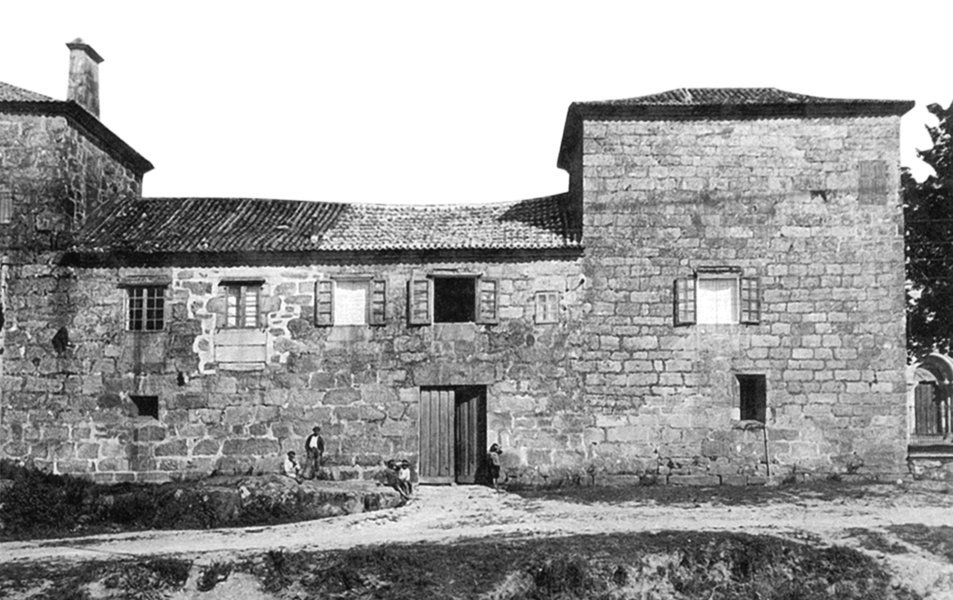
This pazo is first mentioned in 1496, in the deed of donation whereby Xoán Mariño de Sotomayor bestowed it upon his grandnephew. It was probably built over the remains of a previous medieval tower, covered with tiles and decorated with bat-tlements as many other towers found along the coast of Arousa. However, this tower, as those found in Lobeira; in Cambados, San Sadurniño; or in Catoira, Oeste, was destroyed in the last quarter of the 15th century by the Santa Hermandad – a type of military association of armed individuals – the second of the Irmandiño wars.
In those hectic times (1467), in Galicia the royal authority represented by the lords became deteriorated since they held excesive power over the peasants. The peasants started a rebellion and marched on the castles, towers and forts, and on pazo of Sobrán as well.
Thus, in the late 15th century, the tower of Sobrán was nothing but a ruin. However, at the beginning of the 16th century, Suero Gómez de Sotomayor, brother of the founder of Vilaxoan, Xoán Mariño, decided to build a pazo which is the one we can see in Vilaxoán now. According to Vasco de Aponte, the pazo was built with stones from the ruined monastery of Cálogo, en Vilanova, whose bell tower, the only part of the structure which has been preserved, became the symbol of this council.
It was then when the pazo of Sobrán adopted its present features: a big manor house flanked by two towers with rooms to the back part of the construction forming a U-shaped patio, so typical in Galician pazos. Sobrán belonged first, to the counts of Maceda and then to the counts of Castelar. Eventually, it belonged to a family who run a well-known restaurant, called El Lagar, on the ground floor. Today, both the pazo and the restaurant are shut down.

Address: Avenida de Cambados, 163- Vilaxoán. 36611 – Vilagarcía de Arousa.
Visits: Private property. Only outdoor visits allowed. It is located next to the parochial church of San Martin of Sobrán, a 12th century Romanesque construction.